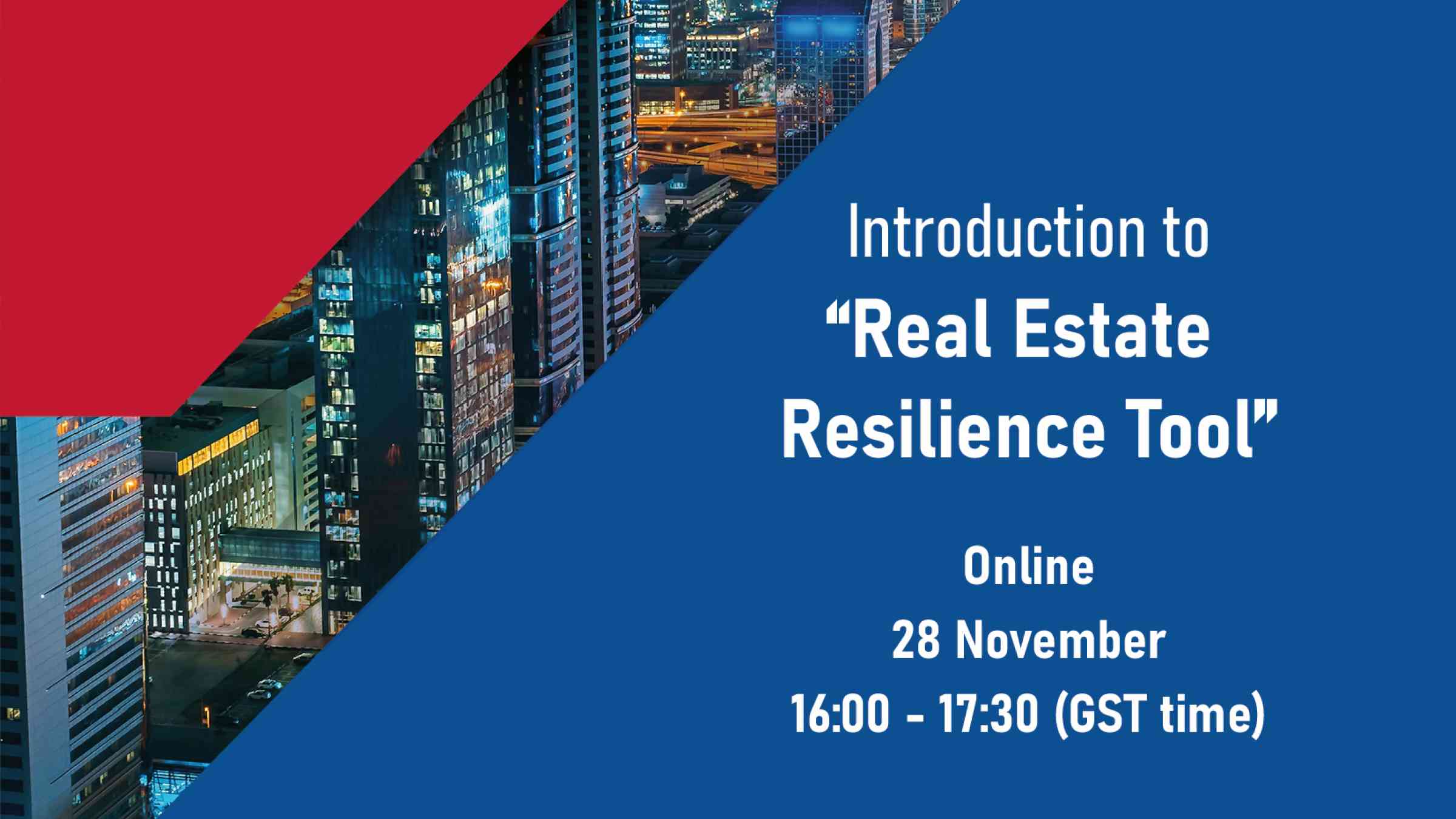Toward Resilient Infrastructure: UNDRR and FIABCI Introduce the Real Estate Resilience Tool

28 November 2022, The United Nations Office for Disaster Risk Reduction (UNDRR) and the International Real Estate Federation (FIABCI) introduced the Real Estate Resilience Tool, which provides guidance to owners, investors, and developers to facilitate the shift from disaster risk management to disaster risk reduction.
UNDRR and FIABCI signed a global partnership agreement aiming to foster a culture of prevention and resilience in the real estate sector through advocacy and promotion of standards and tools to support sustainable and resilient infrastructure. Accordingly, a Real Estate Committee was established and operates under the guidance of UNDRR Private Sector Alliance for Disaster Resilient Societies (ARISE)-UAE. The committee brought together private sector experts in the real estate industry to support and facilitate the development of the Real-Estate Resilience Tool.
“Toward resilient infrastructure is what we aspire with the International Real Estate Federation in a global partnership that we have signed this year,” said Sujit Mohanty, Chief of UNDRR Regional Office for Arab States. “The private sector plays a crucial role in fostering resilience by reducing vulnerabilities. Today’s work is proof of the importance of collaboration between the private and public sectors, and how it can become a catalyst for business innovation, knowledge sharing, and reducing risk for a sustainable and more resilient future.”
The tool was introduced in a webinar attended by 50 participants from Belgium, USA, Philippines, UK, Jordan, Egypt, UAE, Netherlands, Nepal, Italy, Switzerland, and Sweden and led by UNDRR, FIABCI, ARISE-UAE members, the committee members, ARUP, and several stakeholders. The Real-Estate Resilience Tool will assist with strategic-decision making that drives greater resilience in business operations and assets. Furthermore, it is considered an advocacy tool to achieve change in the real estate sector and its industry practices at various stages.
The tool comes to provide information and a strategic-level evaluation to help business leaders in the sector to value, assess, and plan for asset and operational resilience, taking a broad view that considers not only traditional factors such as financial value, climate change resilience, and transitioning to a less polluting economy, but also a wider social context, the natural world, and the interactions between nature, society and development, acknowledging that shocks and stresses may occur that are not necessarily predictable.
The frequency, intensity, and impacts of natural and man-made hazards are increasing on the global level. These events are significantly affecting real estate and its associated systems, which are crucial to the functioning of society and the economy.
The ability of real estate assets to adequately prepare for such events and quickly return to full operations – a quality known as resilience – contributes significantly to a community’s ability to bounce back. Understanding and measuring disaster risk to infrastructure systems are instrumental in designing resilience plans. Appropriate adaptation strategies should also be included in industry standards and practices.
The UNDRR and FIABCI partnership agreement encourages the need to think and act differently about disasters and to shift the focus from picking up the pieces post-disaster to risk-proofing.